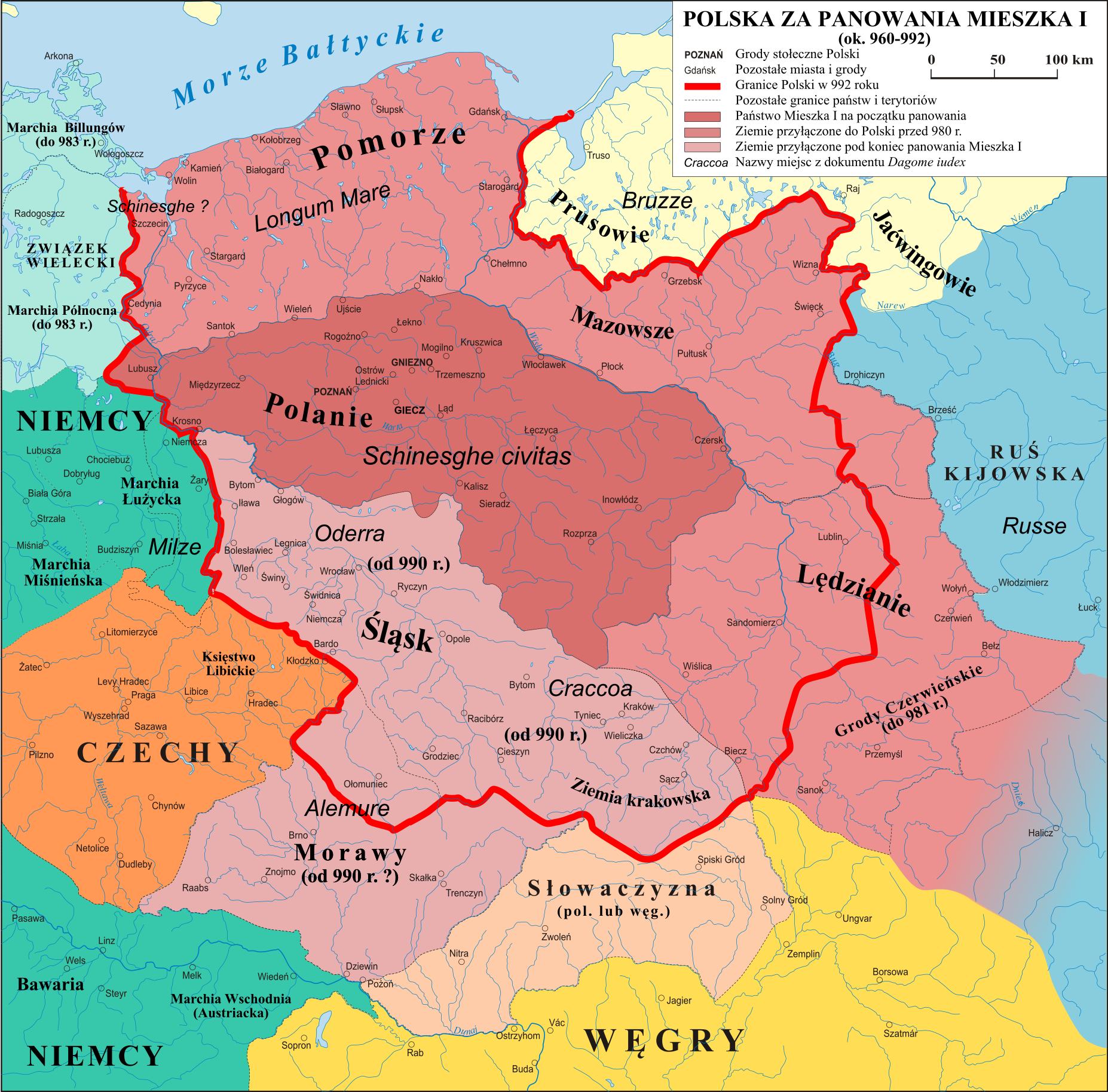Polish-Bohemian alliance on:
[Wikipedia]
[Google]
[Amazon]
The Polish Bohemian alliance was a pact made between the Polish and Bohemians around the year 965. It was formed by the marriage of Mieszko I (prince of Poland) and
 Mieszko I, prince of Poland, wanted to expand the land and gain more influence in Europe. However, the task was hard to achieve at the time since Poland was still Pagan and surrounded by Christian nations such as Germany and Bohemia. The German emperor
Mieszko I, prince of Poland, wanted to expand the land and gain more influence in Europe. However, the task was hard to achieve at the time since Poland was still Pagan and surrounded by Christian nations such as Germany and Bohemia. The German emperor
Dobrawa of Bohemia
Doubravka of Bohemia, Dobrawa ( cs, Doubravka Přemyslovna, pl, Dobrawa, Dąbrówka; ca. 940/45 – 977) was a Bohemian princess of the Přemyslid dynasty and by marriage Duchess of the Polans.
She was the daughter of Boleslaus I the Cruel, ...
(princess of Bohemia). The alliance contributed to the Christianization of Poland and subsequently provided many advantages, such as offering an escape from the control of Germans and giving the Polish more land and influence. However, the pact did not last long and it broke shortly after the death of Dobrawa of Bohemia
Doubravka of Bohemia, Dobrawa ( cs, Doubravka Přemyslovna, pl, Dobrawa, Dąbrówka; ca. 940/45 – 977) was a Bohemian princess of the Přemyslid dynasty and by marriage Duchess of the Polans.
She was the daughter of Boleslaus I the Cruel, ...
.
Background
 Mieszko I, prince of Poland, wanted to expand the land and gain more influence in Europe. However, the task was hard to achieve at the time since Poland was still Pagan and surrounded by Christian nations such as Germany and Bohemia. The German emperor
Mieszko I, prince of Poland, wanted to expand the land and gain more influence in Europe. However, the task was hard to achieve at the time since Poland was still Pagan and surrounded by Christian nations such as Germany and Bohemia. The German emperor Otto I
Otto I (23 November 912 – 7 May 973), traditionally known as Otto the Great (german: Otto der Große, it, Ottone il Grande), was East Frankish king from 936 and Holy Roman Emperor from 962 until his death in 973. He was the oldest son of He ...
had intentions of converting Pagan lands to Christianity and to control them. Mieszko I wanted to avoid being controlled by the emperor and so he sought help from the Bohemians and they formed an alliance. The Bohemians joined the alliance because at the time it was very advantageous to them as it provided them more security.
Conditions of alliance
Bohemia was already Christian when the alliance was formed and soDobrawa of Bohemia
Doubravka of Bohemia, Dobrawa ( cs, Doubravka Přemyslovna, pl, Dobrawa, Dąbrówka; ca. 940/45 – 977) was a Bohemian princess of the Přemyslid dynasty and by marriage Duchess of the Polans.
She was the daughter of Boleslaus I the Cruel, ...
, who married Mieszko I as a part of the alliance, saw it as one of her main goals to Christianize her husband and his nation. Christianization of Poland
The Christianization of Poland ( pl, chrystianizacja Polski) refers to the introduction and subsequent spread of Christianity in Poland. The impetus to the process was the Baptism of Poland ( pl, chrzest Polski), the personal baptism of Mies ...
was a condition of the alliance. Mieszko I got baptized in 966 and the nation soon followed his footsteps. Christianization of Poland
The Christianization of Poland ( pl, chrystianizacja Polski) refers to the introduction and subsequent spread of Christianity in Poland. The impetus to the process was the Baptism of Poland ( pl, chrzest Polski), the personal baptism of Mies ...
is marked as the nation's birth and is considered one of the most important dates in Polish history.
Effects of alliance
The alliance helped Poland and Bohemia escape from the potential control of the Germans as well as to get away from the possible aggressions coming from other states. It also contributed to Christianization of Poland, which helped Mieszko I gain more foreign cultural experience and adopt certain elements of state organization. The alliance improved external and internal affairs. The country was more united and organized. The alliance also helped Mieszko I obtainedWestern Pomerania
Historical Western Pomerania, also called Cispomerania, Fore Pomerania, Front Pomerania or Hither Pomerania (german: Vorpommern), is the western extremity of the historic region of Pomerania forming the southern coast of the Baltic Sea, Weste ...
, a country at the mouth of the river Odra which played an extremely important role in commerce and economy in the ninth and tenth centuries.
The alliance gave advantages to the Bohemians as well. It safeguarded their land beyond the Carpathians
The Carpathian Mountains or Carpathians () are a range of mountains forming an arc across Central Europe. Roughly long, it is the third-longest European mountain range after the Urals at and the Scandinavian Mountains at . The range stretches ...
and also gave them an opportunity to extend their political and religious influence to the Slavic states.
Aftermath
Polish-Bohemian cooperation started to fall after Dobrawa's death in 977, and turned into an all out war in a decade (the Polish-Bohemian War of 990).References
{{Reflist Treaties of Poland 965 10th century in Bohemia 10th-century treaties Czech Republic–Poland relations 10th century in Poland Duchy of Bohemia